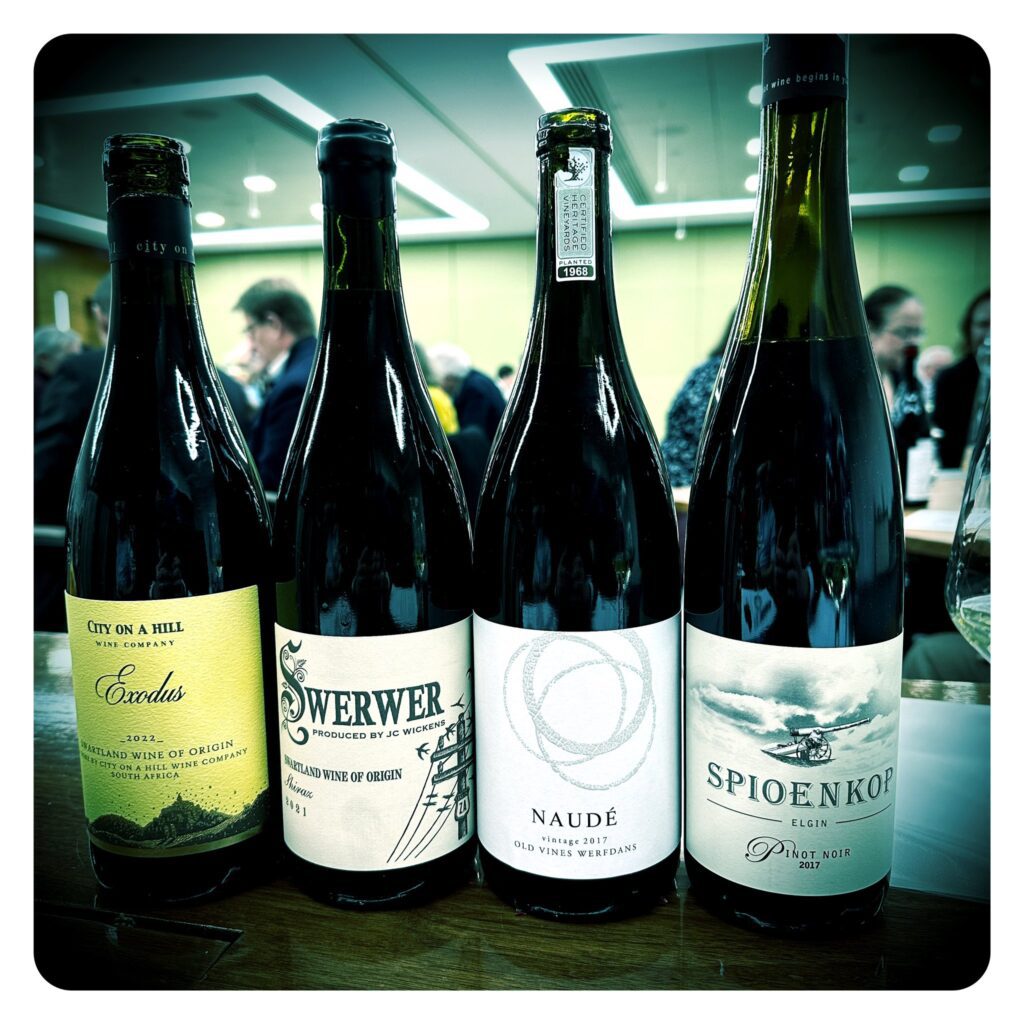February and March are usually an amazingly busy time in the European wine trade calendar, and never more so than now. As South African producers toil to bring in their grape harvests and begin wine operations for 2024, the UK wine trade is waking up in earnest after “Dry January” and is desperately trying to breathe new life back into the flagging fine wine market. Not to mention, UK importers will expect producers to travel to the UK mid-harvest to pour and present their existing releases at tastings across their portfolio, but they will also expect them to work in the wider wine trade to help revitalize customers after what has turned out to be two consecutive quarters of recession. in the UK economy. I know from the Cape Winelands Bush Telegraph that talk of tough times and tough market conditions is a topic that preoccupies many local South African producers. In fact, it's a broader topic that occupies much of the UK wine trade in general at the moment.
But the UK wine industry is not alone in facing economic headwinds. The French wine and spirits sector saw a notable decline in exports in 2023, with figures falling by 5.9% to €16.2 billion amid global economic challenges, prompting the president of the Federation of Wine and Spirits Exporters of France (FEVS) to describe it as a “wake-up call”. For French wine and spirits companies This decline, as revealed by FEVS, comes at a time when rising inflation and lower disposable income around the world have noticeably affected consumer spending habits, leading to a decline in demand for luxury goods, including wines and spirits. Luxury.
The United States, a key market for French exports, saw a sharp decline of 22% to 3.6 billion euros, which was largely due to a correction in wholesaler inventory levels after purchases rose due to the Covid-19 pandemic. However, performance in the United Kingdom and Asia provided More accurate picture. In the UK, exports remained relatively flat at €1.7 billion, a 1% increase on the previous year, and sales of sparkling and still wines remained largely unchanged, although volumes fell by 5%. This is perhaps to be expected with modest Bordeaux, Burgundy and Champagne prices hitting all-time highs, forcing buyers to cut back on purchases in terms of volume, if not value as well.
By highlighting the wider implications of these trends, it reminds all of us in the wine trade of the ongoing need to adapt to changing consumer and market demands. It also demonstrates the extent to which the sustainability of South African wine export success requires strong and long-term support from public authorities as well as larger master brand owners, allowing the development of new market segments and precluding other more mature market segments. To retreat further. But ultimately, the scope and influence of bodies like Wines of South Africa (WOSA) will be greatly limited by persistent budget constraints and the highly unhelpful GBP/ZAR exchange rate. As always, marketing and brand building will fall to all individual producers on the Cape.
Of course, broader wine trading market indicators paint a fraught picture for many international producers. But I would also argue that in a UK and European context, South African wine is still riding an amazing wave of fine wine popularity that certainly does not look like it will wane any time soon. Entry-level SA bulk wine shipment volumes are likely to see declines next year, but dig a little behind the numbers and you'll see that sales of quality bottled wines are thriving and growing, and while cost pressures are affecting all producers, the best wines are still seen in the South Africa as offering good value for money. So surely through all this, South African producers must avoid, consciously or even unconsciously, painting themselves into a false corner of despair when sentiment on the ground remains largely upbeat.
Large and small wine producers across the Cape winelands should be actively planning and budgeting for their upcoming rounds of visits and marketing exercises in the UK for the upcoming European spring. While overall positive market sentiment towards South African wines persists, consumers are a bit of a goldfish, needing constant reminders of why South African wines are some of the most exciting, diverse and collectible of the moment. Positivity should be the order of the day, because like most things in life, focusing too much on the negatives can be a self-fulfilling prophecy if producers aren't careful. Many producers, not least the Bordelais family, have already convinced themselves and the market that the upcoming 2023 En-primeur campaign will be a failure due to the moments of difficulty leading up to the 2023 harvest. South African producers would do well to learn from their mistakes and focus on the positive narrative that will shape Ultimate hype around their new releases.
But perhaps I'll leave the final words to Justin Gibbs, Vice Chairman and Head of Stock Exchange at Liv-ex… “With Chinese demand sidelining and rising interest rates impacting equity holding strategies, both at the level of traders and collectors, risk aversion remains However, fine wine has always been a relatively steady ship in the storm, and recent trade dynamics suggest that some are starting to smell a real opportunity For South African wine at least, the momentum, in my opinion, remains bullish for now.
Greg Sherwood was born in Pretoria, South Africa, and as the son of a career diplomat, he spent the first 21 years of his life traveling the world with his parents. Sherwood holds a degree in Business Administration and Marketing from Webster University, St. Louis, Missouri, USA, and began his career as a commodities trader. In 2000, he decided to have a long-term interest in wine and took a position at Handford Wines in South Kensington, working his way up to the position of Chief Wine Buyer. Earlier this year, he moved to South African boutique brand Museum Wines to become director of fine wines. He received his Master of Wine degree in 2007.


